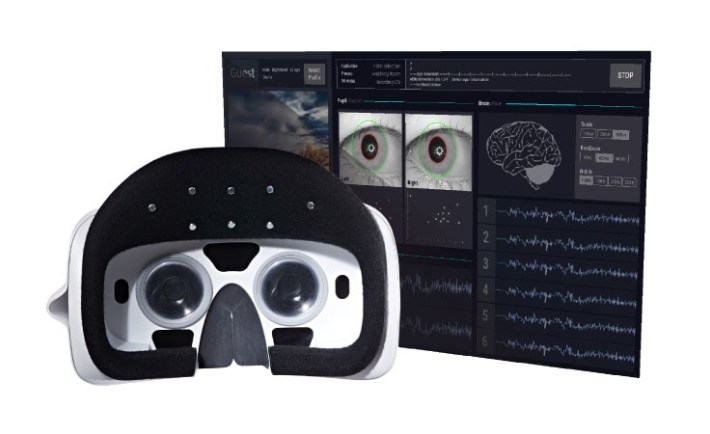Published · Updated
The virtual-reality experience can often be an isolating one for both the user and for anyone hoping to acquire data on the user’s experience using VR. That brand of isolation is almost synonomous with VR, but Looxid Labs is hoping to give researchers a window into what people feel while immersed in VR. At first glance, LooxidVR looks and functions exactly as a normal VR headset would.
However, look closer and you’ll see just what the equipment has to offer. LooxidVR comes equipped with two eye-tracking cameras and six EEG brainwave sensors, all wired into a versatile mobile-based VR headset.

Using LooxidVR, researchers can detect brain functions and pupil size in a facilitated time-synchronized fashion, meaning everything is synced up so the correlation between these different measures can more easily be studied. Pupil size is a major indicator of a person’s cognitive state, and tracking it is made even more valuable by the ability to show pupil size changes against the changes in a person’s mental state.
When it comes to actually processing this information, LooxidVR has a few different ways of showing it to the user in an accessible way. LooxidVR has a powerful noise-reduction component that removes the extraneous mess brought about by factors such as eye-blinking, muscle movement and electrical interference for other devices. All of these factors come together to provide vast amounts of data on human perception based on what the user is seeing through the headset and feeling in his or her mind during the VR experience.

The medical applications for LooxidVR are numerous, but the most obvious one is perhaps in the neuroscience field. LooxidVR provides the rare opportunity for neuroscientists to realistically simulate various stimuli to a patient and then see how he or she reacts when presented with these stimuli. LooxidVR allows for the creation of VR
environments in the robust Unity development architecture.
LooxidVR is still in its infancy as a product, having only just debuted at the Consumer Electronics Show earlier in 2018. However, its features provide an interesting look into the future of fields like neurology and psychology, and they provide researchers with an easy-to- use application program interface in order to even further streamline the data-gathering process.
Tags: #brainwaves#digitalhealth#EEG#eyetracking#futureofhealthcare#healthiAR#looxidVR#medtech#therapyhealthvr
by Angie Banuelos · Published March 1, 2019
by Angie Banuelos · Published May 30, 2018
by Angie Banuelos · Published September 28, 2018 · Last modified January 10, 2019
More
Branded Experiences / Device/Demonstration / HTC Vive / Neurology / Oculus Rift
28 Oct, 2016
What do you think?
You are the first to add a thought